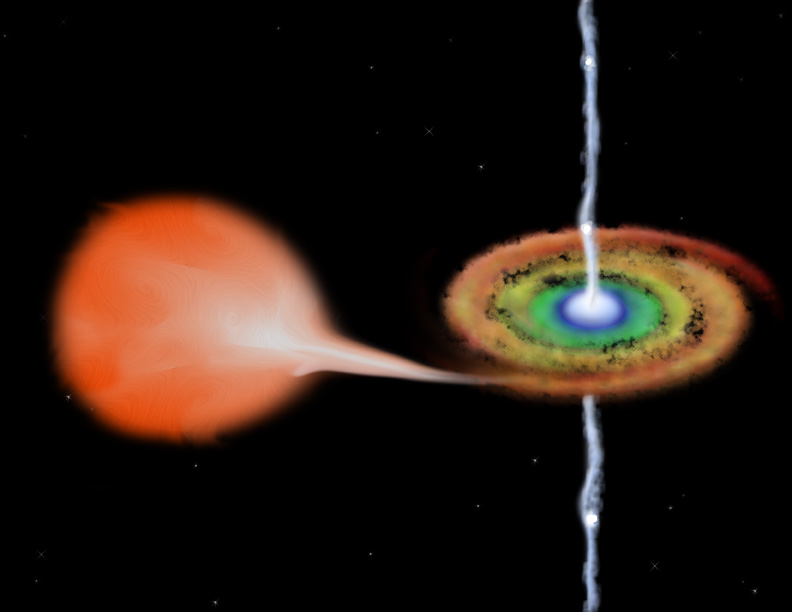Microquasars

X-ray binaries that contain a black hole are often referred to as black hole candidates (BHCs). Those BHCs that are known to produce highly collimated jets are microquasars. There is growing observational evidence that the central engines of active galactic nuclei (AGN) (including quasars), microquasars and gamma-ray bursts (GRBs) are qualitatively similar in their physical configurations, despite their vastly different physical scales. Like supermassive black holes in AGN, stellar-mass black holes in microquasars are also thought to be surrounded by an accretion disk, which is made of material from the companion star, and they are also seen to produce highly relativistic jets. It is widely believed that jet production mechanisms, as well as other physical processes (such as mass accretion), are similar in AGN and microquasars, although direct observational evidence for that is scarce. Compared to AGN, microquasars are often more convenient to use, from a practical point of view, for studying some of the common processes around a black hole, because (1) most of the known systems are in our own Galaxy, so they are closer and tend to be much brighter objects; and (2) the dynamical timescales are much shorter in microquasars, so the variabilities are much easier to observe and quantify. However, most of the known microquasars are transient sources, which makes it difficult to observe them. On the other hand, with the availability of wide-field instruments, such as the ASM on RXTE, many new microquasars have been discovered and studied in detail over the past decade or so. This is expected to continue. I am particularly intrigued by the prospect of seeing those microquasars whose jets are roughly directed along the line of sight - they would be ``microblazars''. In fact, a number of sources, including several EGRET unidentified ones, have been identified as microblazar candidates. Such sources are promising candidates for very high energy gamma-ray experiments. Any detection at GeV-TeV energies would allow a more accurate characterization of particle acceleration and radiative processes in a microblazar - a lesson from studies of gamma-ray emission of AGN.